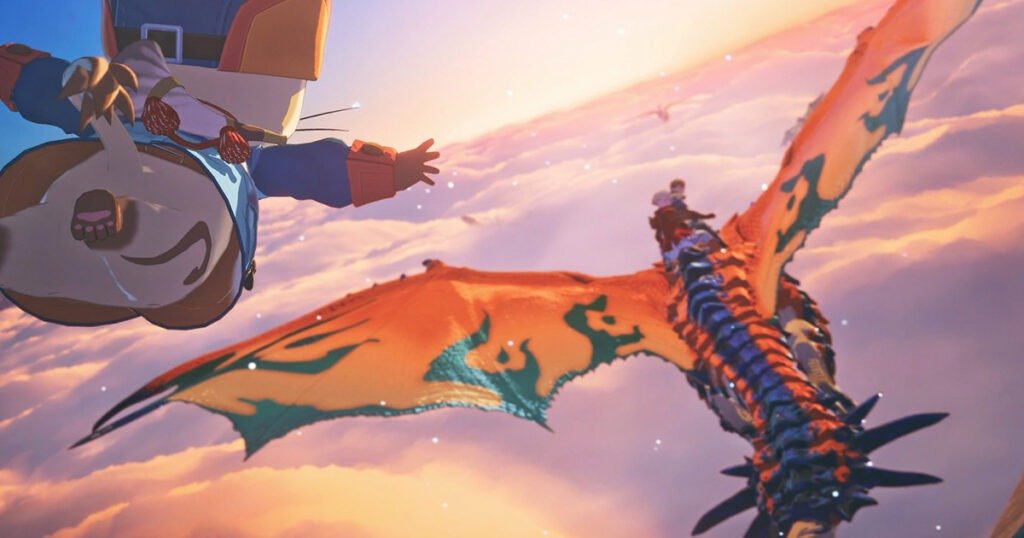Table of Contents
Aiming Higher, Deeper, and More Grown-Up With Monster Hunter Stories 3
A Story Forged from Reflection
When Monster Hunter Stories 3: Twisted Reflection was announced, it was immediately clear that Capcom wasn’t simply making another follow-up. It was creating a reunion. For the development team led by Ryozo Tsujimoto and Takahiro Kawano, the third entry isn’t about reinventing the spin-off’s formula but evolving it for those who grew up with it.
“The first two games were made for a younger generation,” Tsujimoto said at our interview at Gamescom Asia x Thailand Game Show 2025. “This time, our players have grown up, so we wanted something more strategic, not necessarily more difficult, but more thoughtful.”
That sense of maturity shapes everything about Monster Hunter Stories 3: Twisted Reflection, from its more deliberate combat to its layered storytelling. The team saw this new chapter as a chance to add systems and emotional weight that would challenge not just how players fight, but how they think about the world and their connection to it.
Strategy, Not Simplicity
The most striking change is in how the game asks players to engage with its battles. In comparison, earlier games emphasised accessibility and charm; Monster Hunter Stories 3: Twisted Reflection rewards careful planning and deliberate choices.
“When you fight now, you have to think more about the strategy you’re going to use,” Tsujimoto explains. “After you win, you’ll feel more satisfied.”
Combat revolves around reading patterns and using your party’s strengths with precision, something I had to learn in our demo. The systems that once encouraged reactive play now demand foresight, with gauges, layered attack types, and expanded elemental interactions. It’s still approachable, but the design respects the player’s intelligence and the satisfaction lies in mastery, not repetition.
Tsujimoto admits that the goal wasn’t complexity for its own sake. “It’s not about making it hard,” he says. “It’s about making you feel satisfied when you win.”
Telling a Story Beyond the Hunt
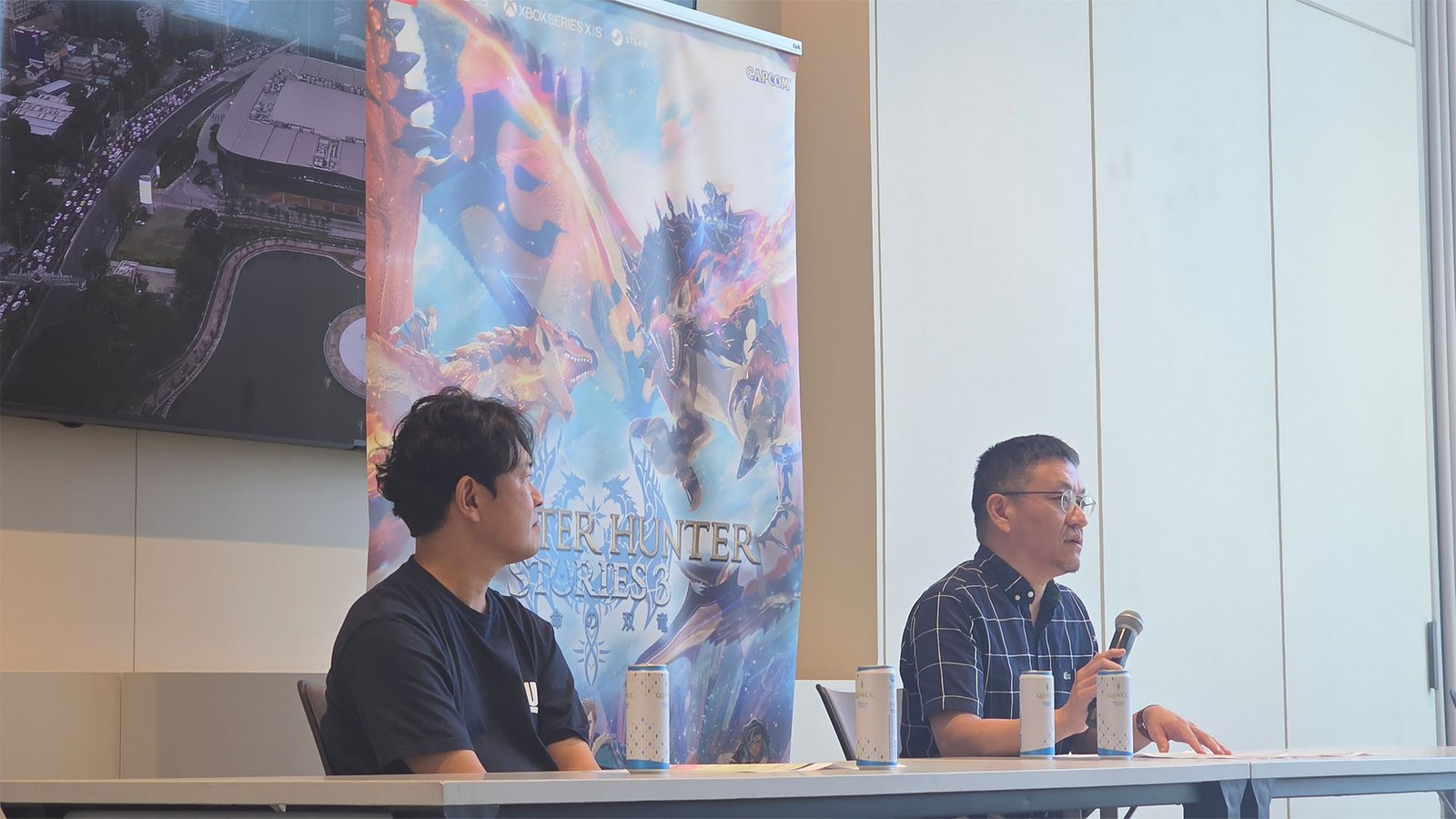
The shift in tone extends far beyond gameplay. While the earlier Stories entries told straightforward adventures about riders and their bonds with monsters, Monster Hunter Stories 3: Twisted Reflection turns its gaze outward, exploring what those relationships mean in a fractured world.
“1 and 2 were the riders’ point of view,” Tsujimoto says. “But this time, we wanted more of the stories, what’s going on around them. We wanted to tell a deeper story.”
At its heart lies a conflict between two kingdoms, their lands threatened by a strange phenomenon of crystallisation or fossilisation spreading across the world. Tsujimoto describes it as both a mystery and a metaphor, a reflection of how time, nature, and human ambition can erode even the strongest bonds.
The title Monster Hunter Stories 3: Twisted Reflection carries that idea forward, hinting at duality, where two sides of a world can mirror the same struggle. It’s a story less about saving the world and more about understanding it.
A World Grown Larger
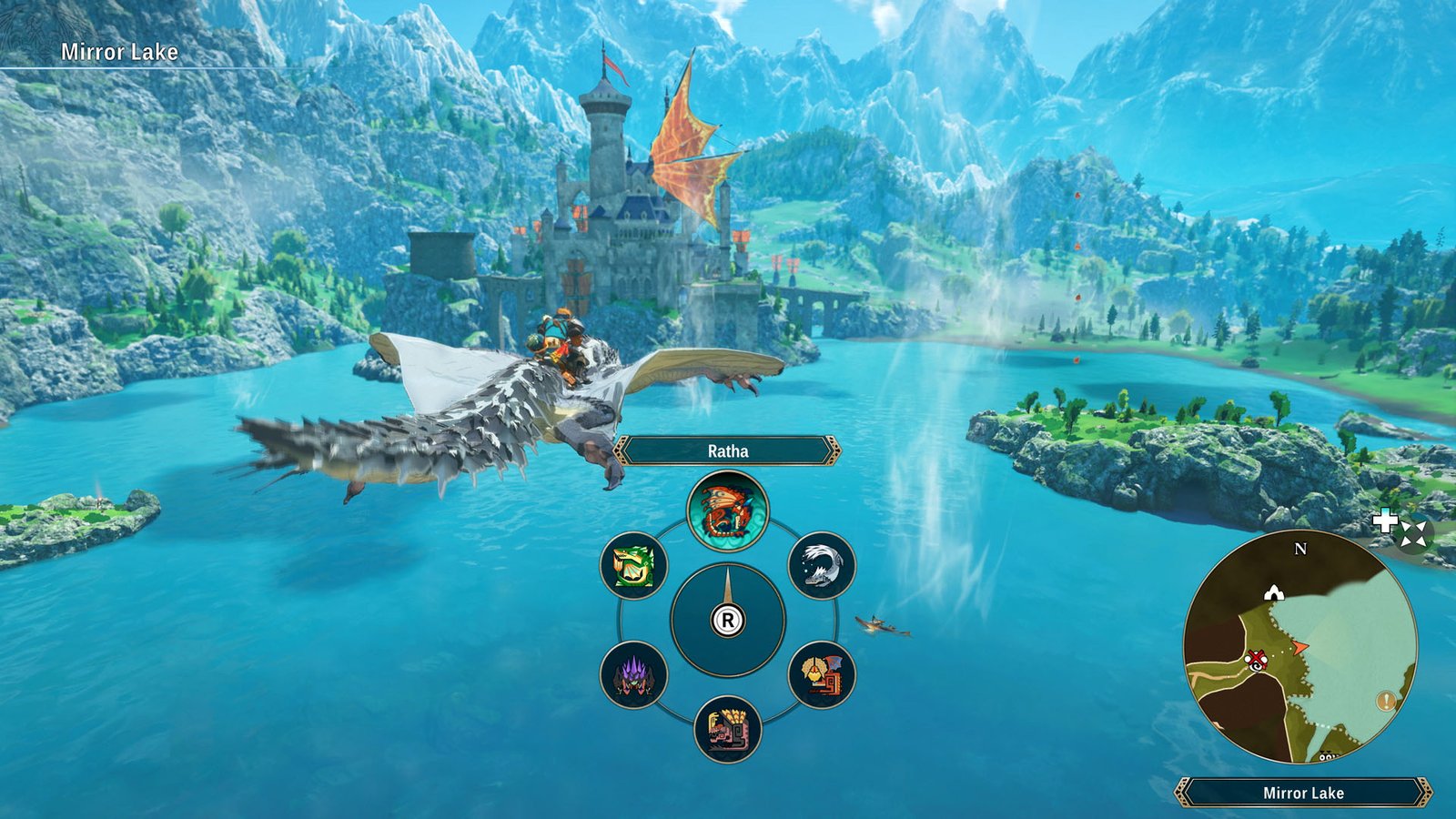
If Monster Hunter Stories 3: Twisted Reflection deepens its ideas, it also broadens its world. The game opens with a region inspired by Switzerland, a decision Kawano says was meant to ground the game in real geography while keeping its fantasy roots. The result is a landscape of glassy lakes, sheer cliffs, and towering peaks, all rendered with painterly vibrancy.
“If you compare the first two games with Stories 3, they were more like shonen manga, lots of fighting and energy,” Kawano says. “This time, we want it to feel more like a movie. The animation, the visuals, the storytelling, everything is a bit more epic.”
Traversal reflects that ambition too. Players can climb, swim, and glide seamlessly across larger maps, with environments designed to feel alive and unpredictable. There’s a cinematic confidence in how the camera frames exploration, capturing the beauty and unease of a world that’s quietly falling apart.
Monsters as Partners, Not Prey
Despite its new scale, the game never loses sight of its emotional heart: the bond between human and monster. Tsujimoto recalls that this was always the defining spirit of the Stories series.
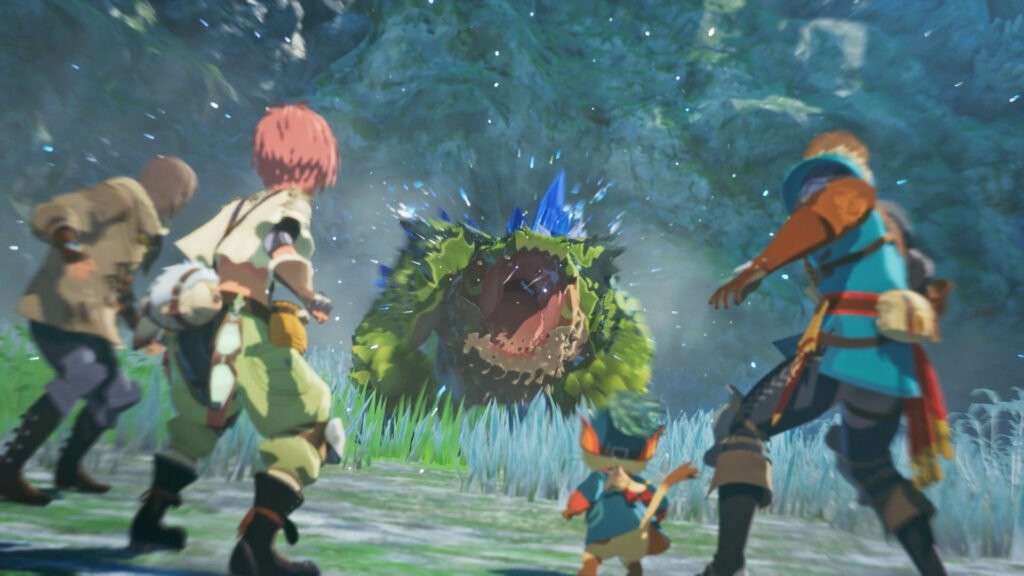
“It’s really hard to talk about 3 without talking about how 1 began,” he says. “The monsters were always popular, fierce, and full of character. I didn’t want them to be just something to hunt. I wanted players to understand them, to feel close to them.”
That relationship remains the emotional centrepiece of Monster Hunter Stories 3: Twisted Reflection. Battles are no longer just about efficiency, but empathy, where knowing your monster’s temperament, reading their reactions, and choosing to fight alongside them rather than command them. It’s a quiet, ongoing conversation between worlds, and the player stands in the middle of it.
The Craft of Art and Character
This maturity extends into the art direction. Kawano and his team approached Monster Hunter Stories 3: Twisted Reflection with the goal of creating a more cinematic experience, one that still honours the series’ warmth but frames it through a grown-up lens.
“We thought a lot about how to make it more epic and entertaining for adults as well,” he says. “There’s going to be a lot of characters this time, and we wanted everyone to have a distinctive look and personality.”
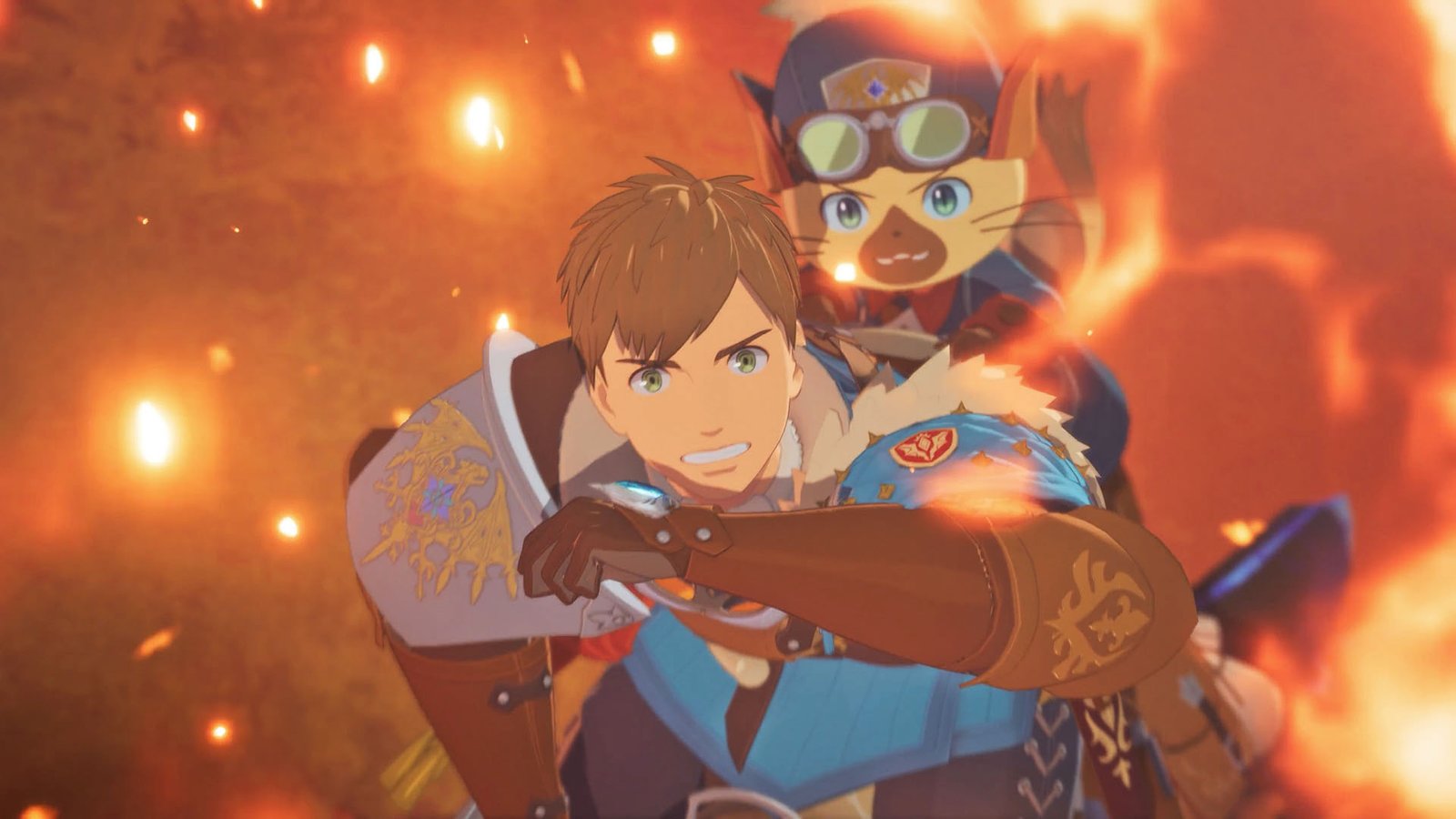
Characters are taller, their designs more defined, yet they retain the expressive clarity that makes Monster Hunter Stories so approachable. The environments echo this same duality: wide, welcoming spaces that conceal fragility beneath the surface.
Every frame feels considered. The lighting, colour, and animation choices aim to evoke emotion rather than spectacle, with Kawano’s background in cinematic composition lending the game a filmic rhythm that’s rare in JRPGs.
Evolving the Experience
For all its ambition, Monster Hunter Stories 3: Twisted Reflection remains a Monster Hunter Stories game at heart — welcoming, heartfelt, and endlessly curious. Its systems have been refined, not overcomplicated, to make sure players always feel engaged rather than overwhelmed.
“Even though there’s a lot going on, we made it easier to understand,” Tsujimoto says. “It’s strategic, but it’s still fun — that’s the point.”
Small but meaningful quality-of-life improvements ensure that combat flows faster and smoothly than before. Monsters can be swapped in real time, while post-battle management is streamlined. Each refinement feels like a step towards something more cohesive, a JRPG that respects time and thought without losing its heart.

A Story Ready to Mature with Its Players
When Tsujimoto and Kawano talk about Monster Hunter Stories 3: Twisted Reflection, there’s a quiet confidence to their words. This isn’t just another sequel; it’s a statement of intent.
“If you loved the earlier games as a kid,” Tsujimoto says, “we want you to love this one as an adult.”
That sentiment captures what makes Twisted Reflection special. It’s a story about growth, not just for the characters, but for the series itself, and for the people who’ve been part of its journey. As the Stories series matures, it doesn’t abandon its innocence but evolves it. It’s about the monsters we once feared, the worlds we once explored, and the reflections we find in both.
Monster Hunter Stories 3: Twisted Reflection launches in 2026 for Nintendo Switch 2, PlayStation 5, Xbox Series X|S, and PC via Steam.

